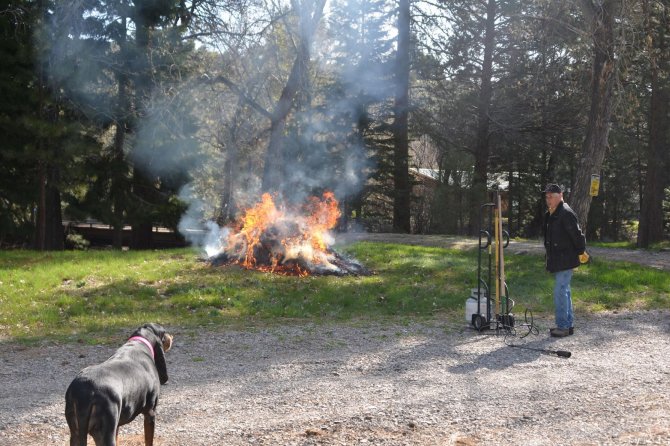Farmers and livestock owners in Northern California are on high alert as thousands of Ebony Blister Beetles invade alfalfa fields, posing significant health risks, particularly to horses. These beetles, which release the toxin cantharidin, can be fatal to horses within 72 hours if ingested through contaminated hay.
Local farmer Hattie has been diligently monitoring her fields and water troughs, finding numerous beetles, especially after watering. “I’ve been scooping beetles out twice a day to protect both the horses and the dogs,” she said. She also discovered clusters of beetles using last year’s alfalfa bales as breeding grounds.
Bryce O’Sullivan, a Pesticide Control Advisor, Certified Crop Advisor, and Modoc County farmer, has reported receiving numerous calls regarding blister beetles in the past 24 hours. “Firstly, yes, there are control options for blister beetles in crops, rangeland, pasture, and other areas, though their success varies,” O’Sullivan said. “Normally, they are not considered an economic pest, but over the last three to four years, their populations have exploded exponentially, with this year being the worst.”
The beetles are known to follow grasshoppers, feeding primarily on grasshopper larvae and alfalfa, and have also been seen consuming other leafy greens, such as lilac bushes, within days. Contact with these beetles can cause painful, fluid-filled blisters on human skin, serious eye troubles, and permanent kidney damage if accidentally ingested.
For horses grazing on green pastures, it is crucial to check fields and dry lot the animals if beetles are present. The beetles tend to congregate on grass tops, especially after watering. Hattie emphasizes the importance of vigilance, “When these beetles come in contact with your skin, painful fluid-filled blisters develop.”
Blister beetles are long, narrow insects that vary in color from yellow to gray. They tend to be more problematic in dry, droughty conditions and can be attracted to and feed on the flowers, pollen, and leaves of blooming alfalfa and weeds.
“Many affected growers, including myself, have contacted USDA APHIS in Sacramento over the last four seasons without any result, leading to significant financial losses for farmers and ranchers in Modoc and surrounding counties,” O’Sullivan said. “Local elected officials have been aware of the issue for just as long, but it has not taken precedence. I have also reached out to other elected officials, such as Brian Dahle’s and Doug LaMalfa’s offices, without any return correspondence.”
Horses are particularly sensitive to cantharidin, experiencing symptoms such as sores or blisters on the tongue and mouth, colic, increased temperature, and frequent urination. There is no specific antidote, and supportive care is the only treatment, making prevention critical.
Farmers are advised to scout fields before harvest, avoid harvesting alfalfa beyond 10% bloom, and watch for beetle swarms during harvest. Using a mower conditioner can help by killing the beetles and keeping them in the windrow. However, farmers should stop if they notice beetle swarms to allow the beetles to disperse.
When purchasing hay, buyers should gather as much information as possible about its production to minimize the risk of blister beetle contamination. This includes knowing who produced the hay, where it was produced, and the cutting and maturity at harvest.
Blister beetle infestations in alfalfa hay or fresh grass can be deadly to horses, and it only takes a few beetles to cause serious harm. Local residents, like Hattie, are urging fellow farmers and livestock owners to remain vigilant and take necessary precautions to protect their animals.
Contact:
For more information on dealing with blister beetles, visit the University of California Agriculture and Natural Resources website or contact your local agricultural extension office.











